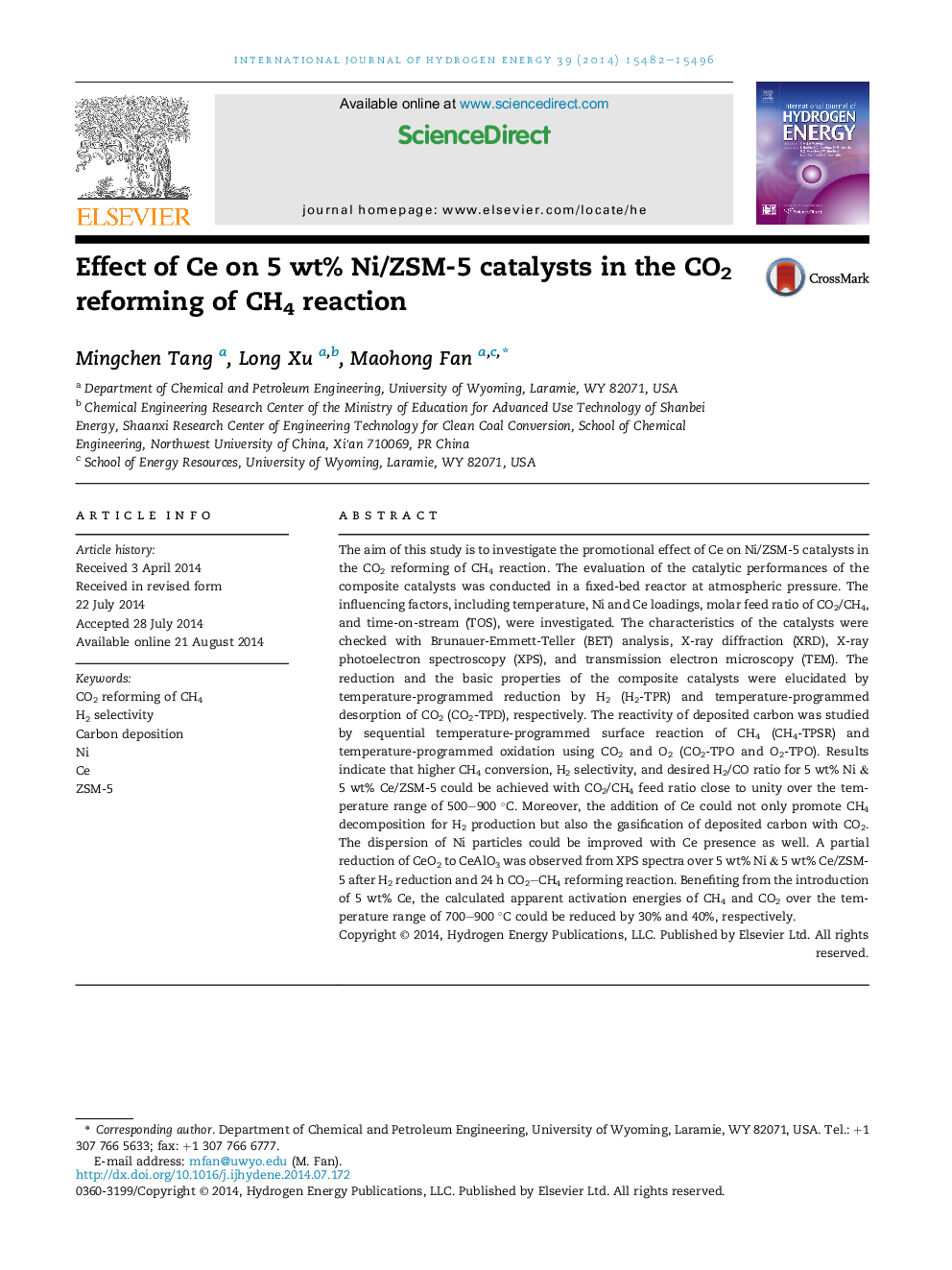| Article ID | Journal | Published Year | Pages | File Type |
|---|---|---|---|---|
| 1272386 | International Journal of Hydrogen Energy | 2014 | 15 Pages |
•Ce could improve the dispersion of Ni on the surface of ZSM-5 support.•The presence of Ce could effectively increase CH4 decomposition.•The introduction of Ce could enhance the affinity toward CO2 on the catalyst surface thereby promote carbon resistance.•5 wt% Ce could significantly reduce the apparent activation energies of both CH4 and CO2 over the 5 wt% Ni/ZSM catalyst.
The aim of this study is to investigate the promotional effect of Ce on Ni/ZSM-5 catalysts in the CO2 reforming of CH4 reaction. The evaluation of the catalytic performances of the composite catalysts was conducted in a fixed-bed reactor at atmospheric pressure. The influencing factors, including temperature, Ni and Ce loadings, molar feed ratio of CO2/CH4, and time-on-stream (TOS), were investigated. The characteristics of the catalysts were checked with Brunauer-Emmett-Teller (BET) analysis, X-ray diffraction (XRD), X-ray photoelectron spectroscopy (XPS), and transmission electron microscopy (TEM). The reduction and the basic properties of the composite catalysts were elucidated by temperature-programmed reduction by H2 (H2-TPR) and temperature-programmed desorption of CO2 (CO2-TPD), respectively. The reactivity of deposited carbon was studied by sequential temperature-programmed surface reaction of CH4 (CH4-TPSR) and temperature-programmed oxidation using CO2 and O2 (CO2-TPO and O2-TPO). Results indicate that higher CH4 conversion, H2 selectivity, and desired H2/CO ratio for 5 wt% Ni & 5 wt% Ce/ZSM-5 could be achieved with CO2/CH4 feed ratio close to unity over the temperature range of 500–900 °C. Moreover, the addition of Ce could not only promote CH4 decomposition for H2 production but also the gasification of deposited carbon with CO2. The dispersion of Ni particles could be improved with Ce presence as well. A partial reduction of CeO2 to CeAlO3 was observed from XPS spectra over 5 wt% Ni & 5 wt% Ce/ZSM-5 after H2 reduction and 24 h CO2–CH4 reforming reaction. Benefiting from the introduction of 5 wt% Ce, the calculated apparent activation energies of CH4 and CO2 over the temperature range of 700–900 °C could be reduced by 30% and 40%, respectively.
Graphical abstractFigure optionsDownload full-size imageDownload as PowerPoint slide
